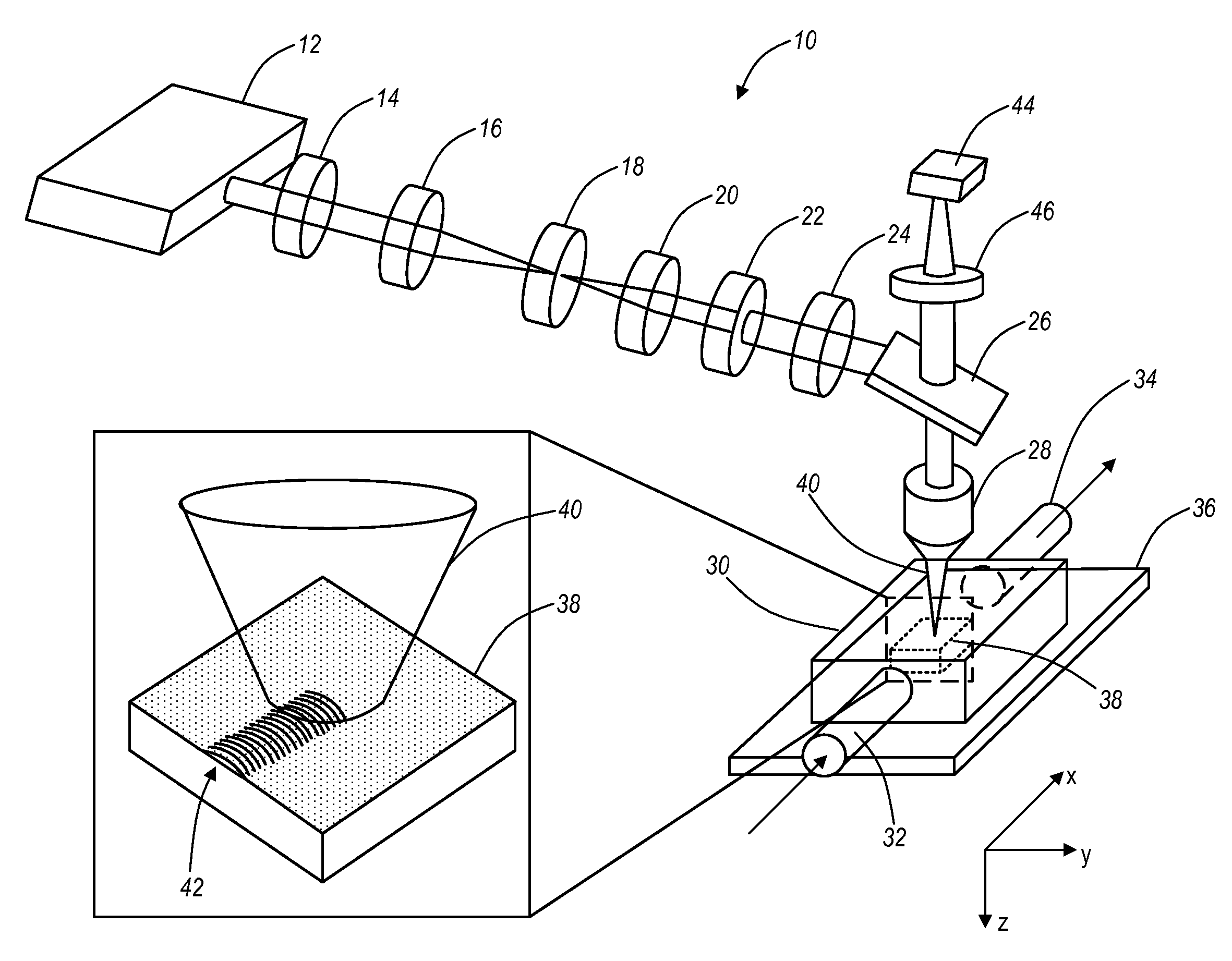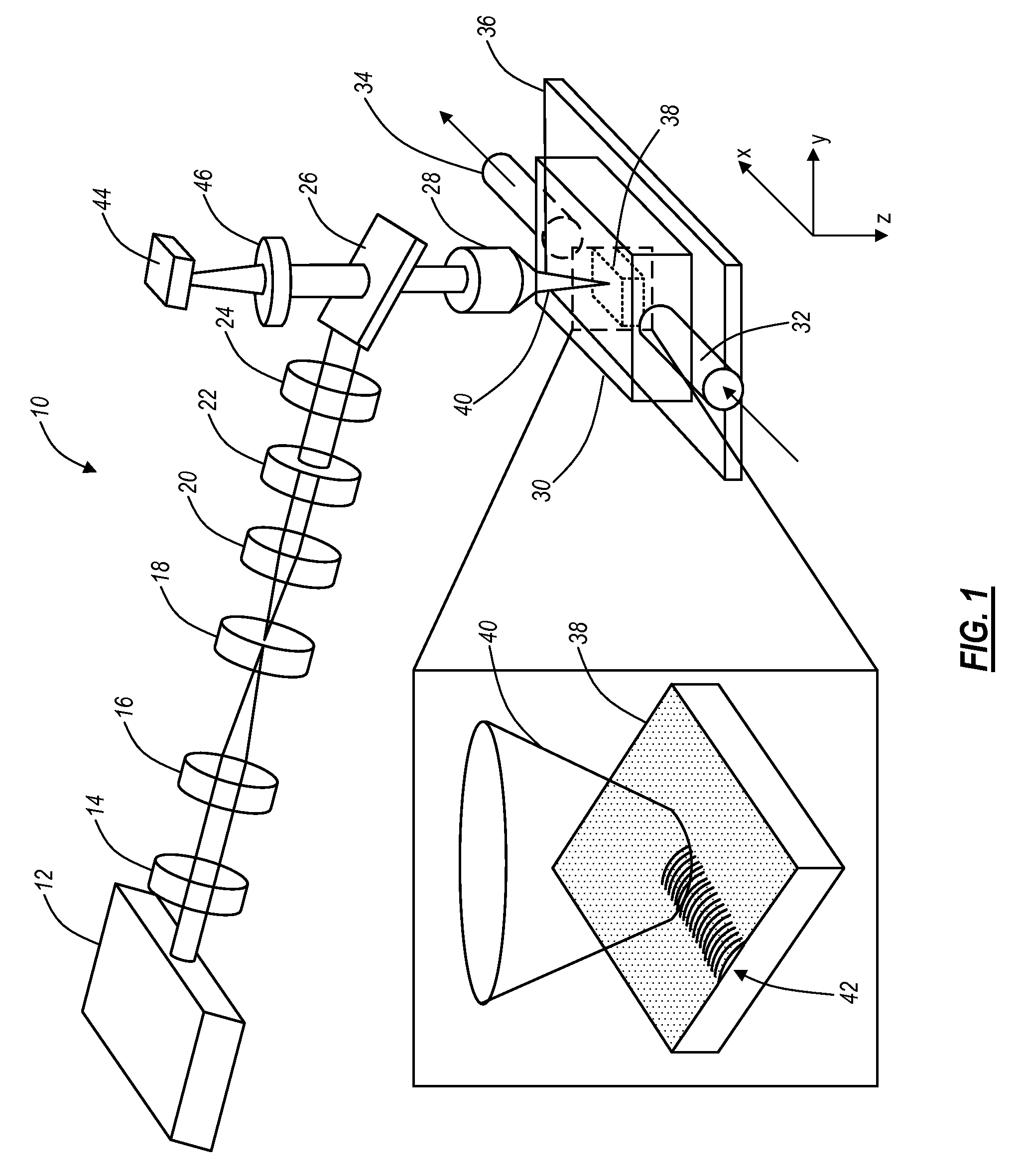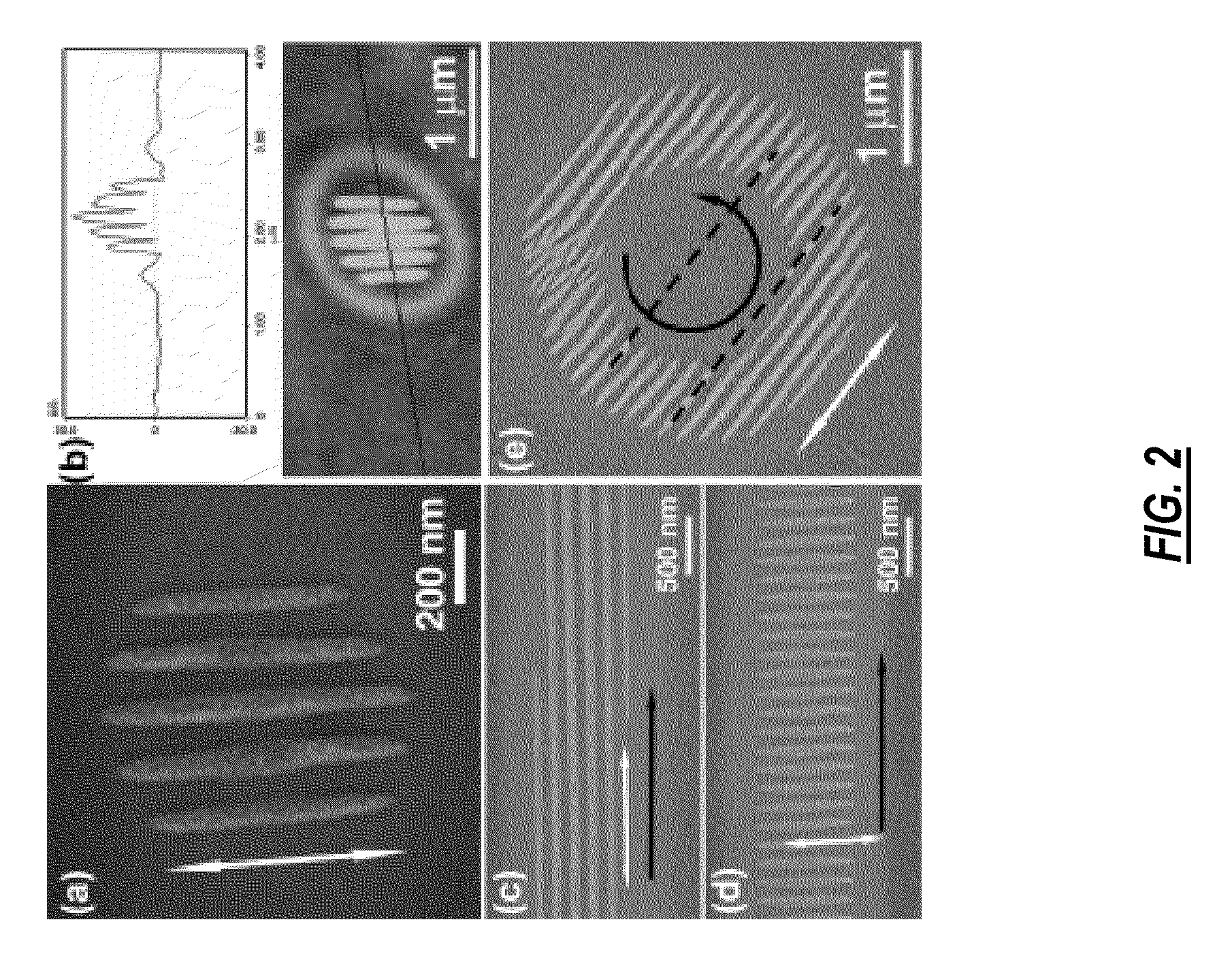Light-induced directed self-assembly of periodic sub-wavelength nanostructures
a sub-wavelength nanostructure and directed self-assembly technology, applied in the field of light-induced directed self-assembly of periodic sub-wavelength nanostructures, can solve the problems of low throughput of light, short-wavelength light source and associated optics, and inability to be readily available, etc., to achieve excellent long-range order, small feature size, and flexibility.
- Summary
- Abstract
- Description
- Claims
- Application Information
AI Technical Summary
Benefits of technology
Problems solved by technology
Method used
Image
Examples
Embodiment Construction
[0029]Again, in various exemplary embodiments, the present invention provides a DW-LCVD technique that is capable of generating a feature size of λ / 5 or smaller, for example, processing multiple features simultaneously, and controlling the morphology of the deposited features, among other advantages. By gently focusing a single 400-nm 150-femtosecond laser beam or the like onto the surface of a substrate disposed in a vacuum chamber at or near room temperature with tungsten hexacarbonyl (W(CO)6) or the like as a precursor, the spontaneous formation of one-dimensional grating-like nanostructures of tungsten or the like are grown heterogeneously on top of the underlying substrate without requiring any beam shaping, such masks or holography. The nanograting is formed simultaneously, and has a very small feature size. Metallic nanogratings with excellent long-range order are achieved simply by translating the substrate with respect to the laser focus. These metallic nanogratings may be ...
PUM
| Property | Measurement | Unit |
|---|---|---|
| wavelength | aaaaa | aaaaa |
| wavelength | aaaaa | aaaaa |
| diameter | aaaaa | aaaaa |
Abstract
Description
Claims
Application Information
 Login to View More
Login to View More - R&D
- Intellectual Property
- Life Sciences
- Materials
- Tech Scout
- Unparalleled Data Quality
- Higher Quality Content
- 60% Fewer Hallucinations
Browse by: Latest US Patents, China's latest patents, Technical Efficacy Thesaurus, Application Domain, Technology Topic, Popular Technical Reports.
© 2025 PatSnap. All rights reserved.Legal|Privacy policy|Modern Slavery Act Transparency Statement|Sitemap|About US| Contact US: help@patsnap.com



